Haunting photos of the economic cost of COVID-19
The financial disaster of a global pandemic

Deserted public transport
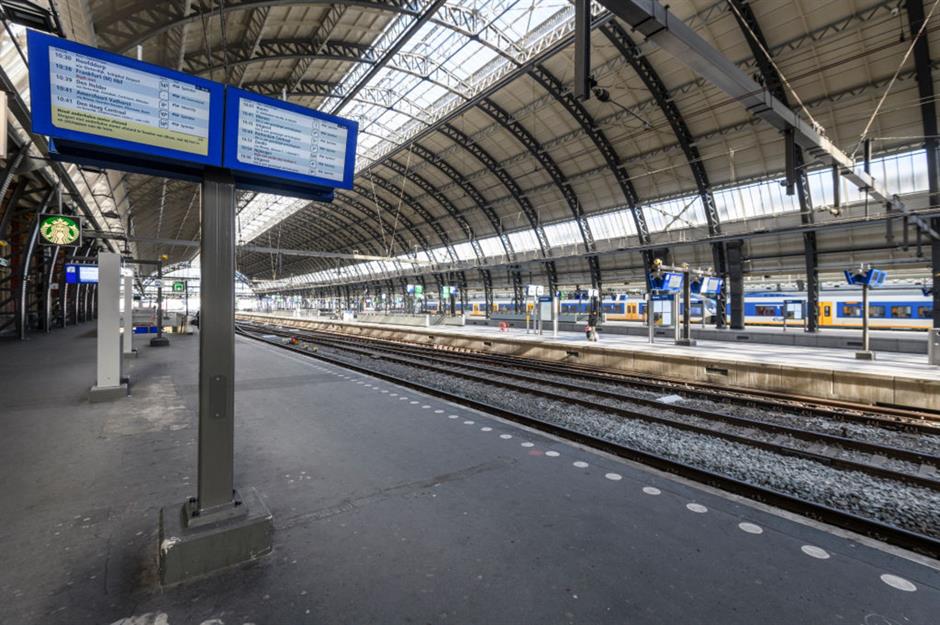
Fears about transmission of coronavirus on public transport led governments all over the world to discourage people from using it, and images of abandoned transport hubs such as this one became commonplace in March. Amsterdam's Centraal train station, pictured here on 31 March, went from being a bustling station to an almost empty space during peak travel hours. In the UK, due to low passenger numbers Transport for London recently had to get its second support package from the UK government, worth £1.8 billion ($2.4bn), following an initial £1.6 billion ($2.1bn) payout in March, in order to stay in business.
Near-empty shopping arcades and malls
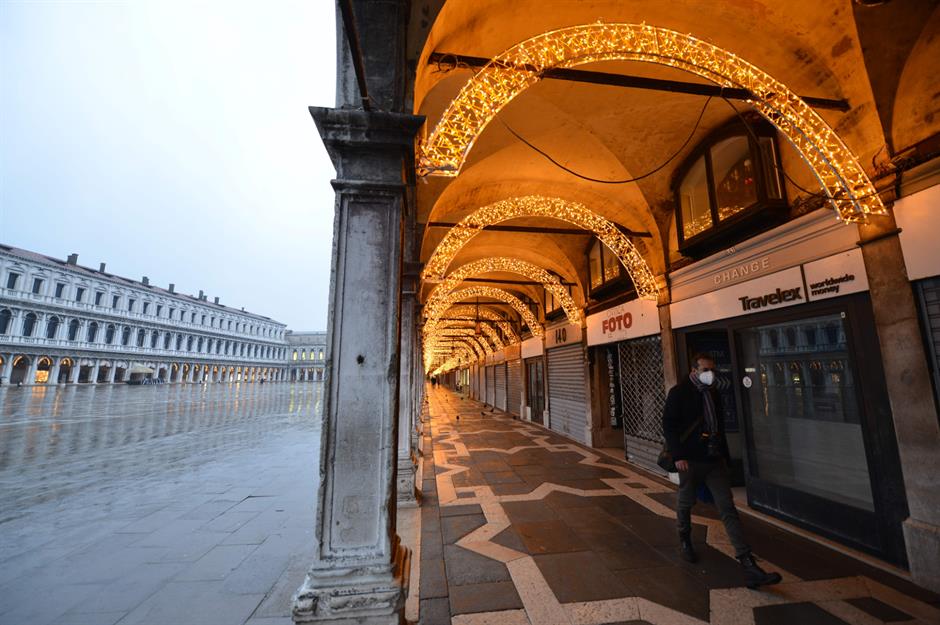
As shoppers head for the safety of online retail during the pandemic, it could be the final straw for many struggling bricks-and-mortar businesses. But it’s not just independent retailers that have been hit – huge brands including JC Penney, Ascena Retail, Muji USA, Brooks Brothers and the US arm of G-Star have filed for bankruptcy this year. In Venice's St. Mark's Square, which is usually a bustling tourist hub year-round, a lone shopper walks through the deserted shopping arcade lit by Christmas lights.
Boarded-up pubs and bars
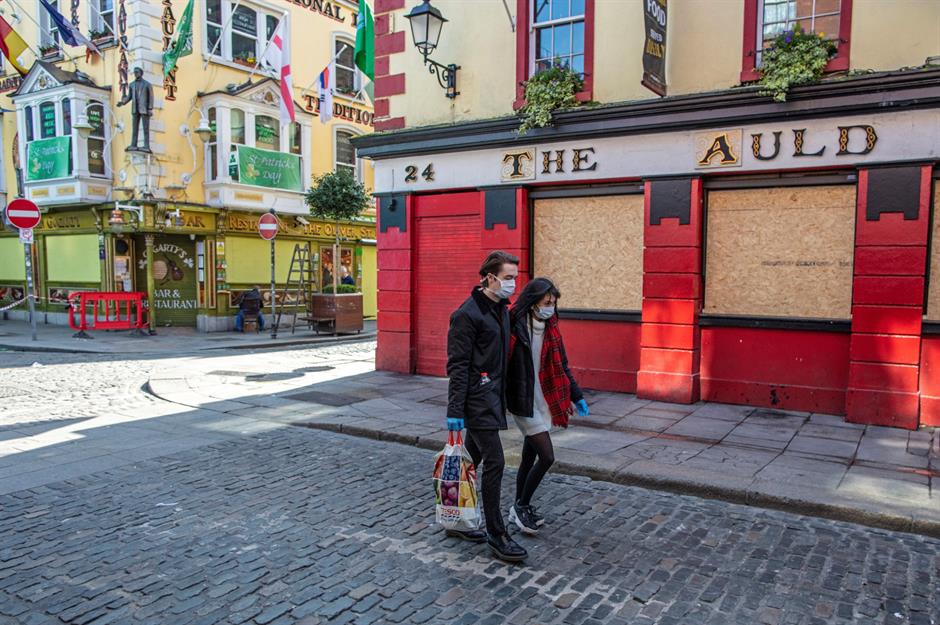
The UK and Ireland have both had two periods of national lockdown so far, and during those times pubs were forced to shut their doors, leaving thousands of people out of work or furloughed. Even when pubs were able to reopen, curfews and reduced capacity made it harder for them to turn a profit. And the same is true almost the world over. Pictured here is a closed pub in Dublin, Ireland at the end of March.
Empty restaurants
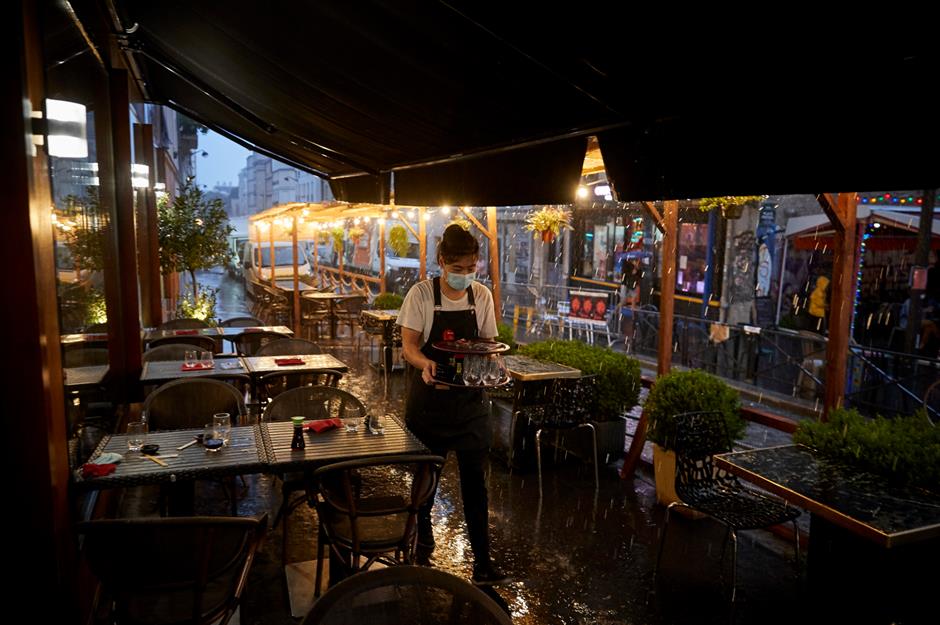
Coronavirus has devastated the restaurant industry and even some larger chains are fighting to survive. In the US, 5.9 million restaurant workers lost their jobs in the first six weeks of the pandemic according to federal data. And while many restaurants have been able to reopen and there was an initial hiring surge after the first lockdown ended, there remains a job deficit of 2.3 million in the American restaurant industry according to the Bureau of Labor Statistics. Diners are eating out again, but for now it’s in far lower numbers: the daily number of seated restaurant diners globally had declined by more than 50% year on year as of 28 November, according to Statista.
Custom massively down at inner-city food outlets
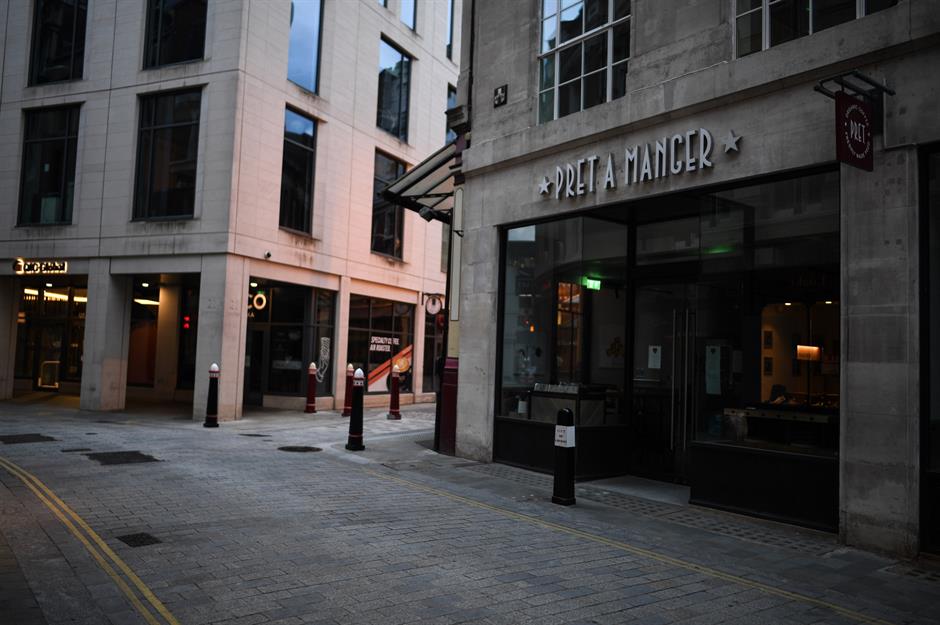
As restaurants feel the effects of COVID-19, to-go food outlets near offices in cities have been hit hard by people working at home and the subsequent reduction in business. According to data from Lumina Intelligence, the UK to-go food sector is set to contract by 29% in 2020, making its total value £15 billion ($20bn) for 2020, compared to £21.3 billion (£28.4bn) in 2019. Popular UK coffee and sandwich chain Pret a Manger (pictured) announced in October that it would be cutting a further 400 jobs, on top of 1,600 job cuts announced in August.
Deserted tourist destinations
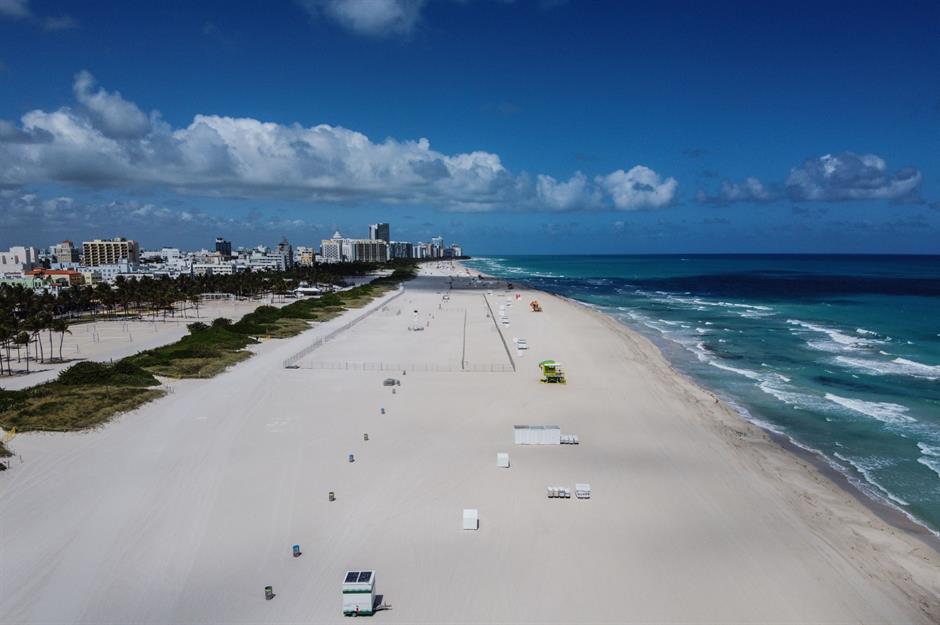
The tourism sector, which accounted for 7% of global trade in 2019 according to the UNWTO, is one of the sectors that’s been most affected by the COVID-19 pandemic. Export revenues from tourism could fall by between $910 billion (£681bn) and $1.2 trillion (£898bn) this year and it’s estimated that up to 120 million direct tourism related jobs are at risk. Pictured here is Miami Beach, Florida on 20 March, which would usually have been filled with visitors enjoying their spring break but remained eerily empty after the authorities advised against public gatherings.
Untouched ski slopes
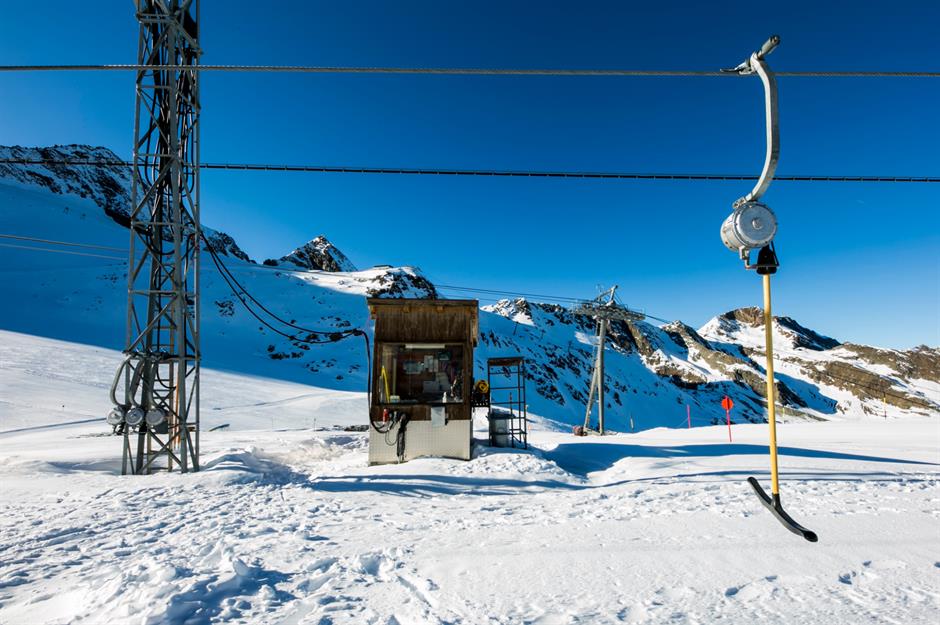
Ski tourism has been hit hard, with resorts in Europe linked to the spread of the virus across the continent earlier this year. One resort in Austria, Ischgl, was even dubbed a “COVID-19 ground zero” after thousands of tourists caught coronavirus while on holiday there and brought it back to their home countries. Ski resorts in France, Italy and Germany plan to remain shut for this ski season but some in Switzerland, Spain and Austria will open. Pictured is the Stubai Glacier ski resort in Austria, which had to delay its opening this year due to a nationwide lockdown that started on 17 November (the measures were released as of 6 December).
Unsold cars stacked up
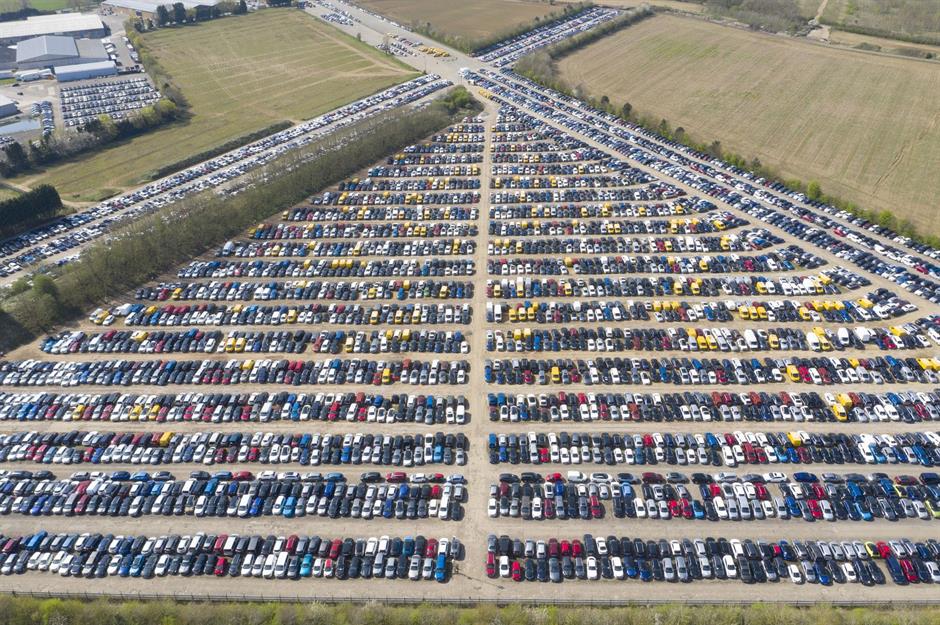
Global car sales were badly hit by the pandemic and are not expected to return to pre-coronavirus levels until 2023 at the earliest, according to a forecast by business consultancy firm BCG. In the UK, new car sales fell by 4.4% in September, which was the lowest number of sales for September in two decades. In the US, car sales had their worst quarter since the Great Depression in the second quarter of this year. Pictured here are thousands of unsold cars stored at the UK's RAF Chipping Warden aerodrome.
Taxis off the roads
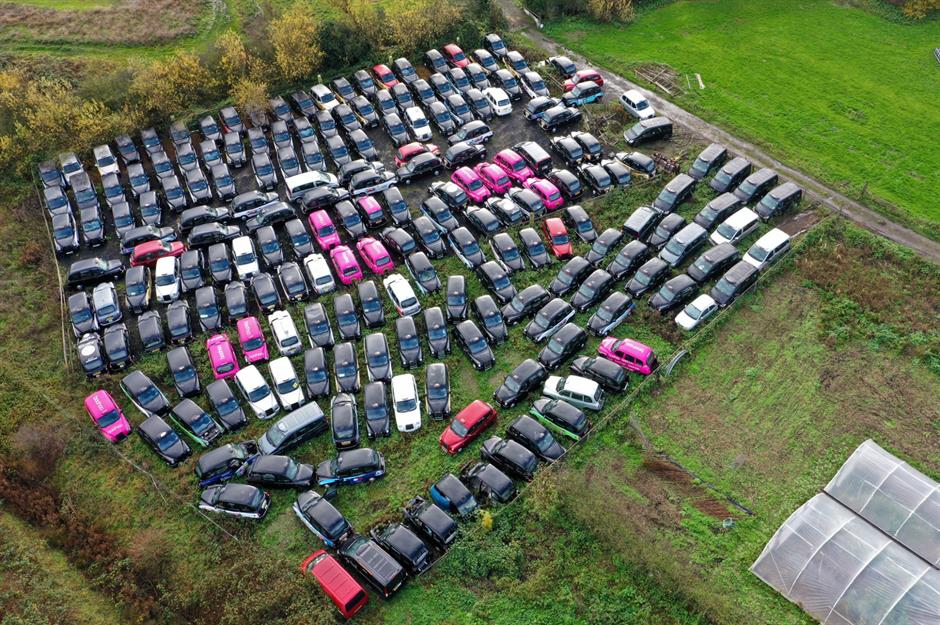
The coronavirus pandemic has meant that taxi drivers worldwide are finding themselves out of work. In London, taxi drivers are earning just a quarter of their usual salaries and only 20% still have their vehicles. Masses of the city’s iconic black cabs have been left deserted in farmland near Epping Forest, pictured here, because this means drivers don’t have to pay insurance on them. Even Uber has been struggling with the effects of the pandemic: it had an average of 55 million customers each month in the April-June period this year, down from 99 million last year.
Cinemas closed around the world
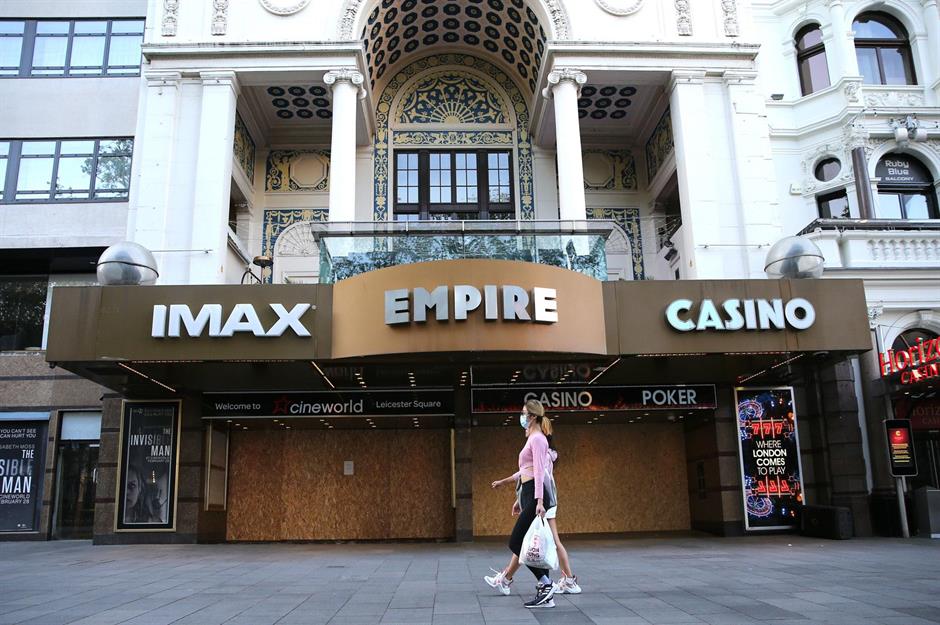
The cinema industry is in crisis as stay-at-home orders, coupled with the rise in streaming services, have kept audiences away from the silver screen. Major blockbusters that were due to be released in 2020, including the new James Bond film and the latest Spider Man movie, have been delayed until next year, and as a result many cinemas have taken the decision to close down temporarily. Cineworld closed all of its 128 cinemas in the UK and Ireland in October, as well as the 543 cinemas which it operates under the Regal Cinema brand name in the US, resulting in 45,000 job losses. It's thought that the industry could lose between $20 billion (£15bn) and $31 billion (£24bn) in revenues this year, according to research firm Omdia, but the impact could be much worse now that many big films are opting to go direct to streaming platforms, with Warner Bros. making the bold decision to put all its 2021 film releases onto HBO Max the very day they are released in cinemas in the US.
Theatres and arts venues closed or only open at a fraction of capacity
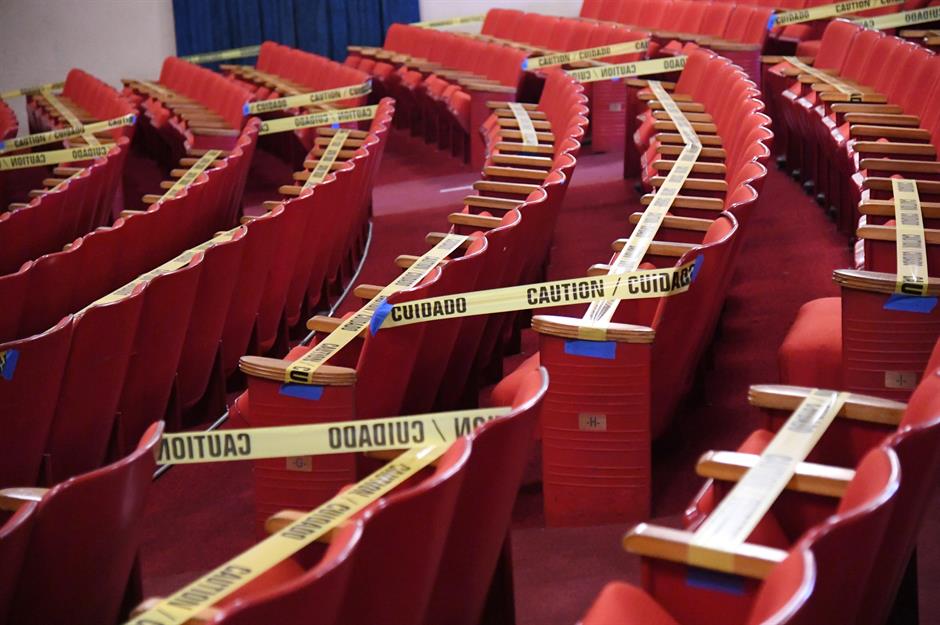
Cinema may have suffered, but arguably live performance venues have been dealt a far worse blow by COVID-19. During lockdowns theatres and concert venues couldn't open, and in August, it was estimated that 5,000 people employed in the industry in the UK had lost their jobs, while in the US there were 1.4 million job losses and $42.5 billion (£32.5bn) in sales losses in the "fine and performing arts" sector, which includes visual arts, music, theatre and dance, according to research by Brookings. In the UK, London's West End reopened in mid-November with two musicals, while Broadway is set to remain closed at least until 30 May 2021. While some venues have been able to put on live shows to smaller, socially-distanced audiences such as this one in Fort Smith, Arkansas, which cordoned off seating areas to ensure the space was safe for audience members attending singer Travis McCready's performance at TempleLive on 18 May, it's going to take the industry a while to recover as smaller audiences mean lower profits.
Sports played in empty stadiums and arenas
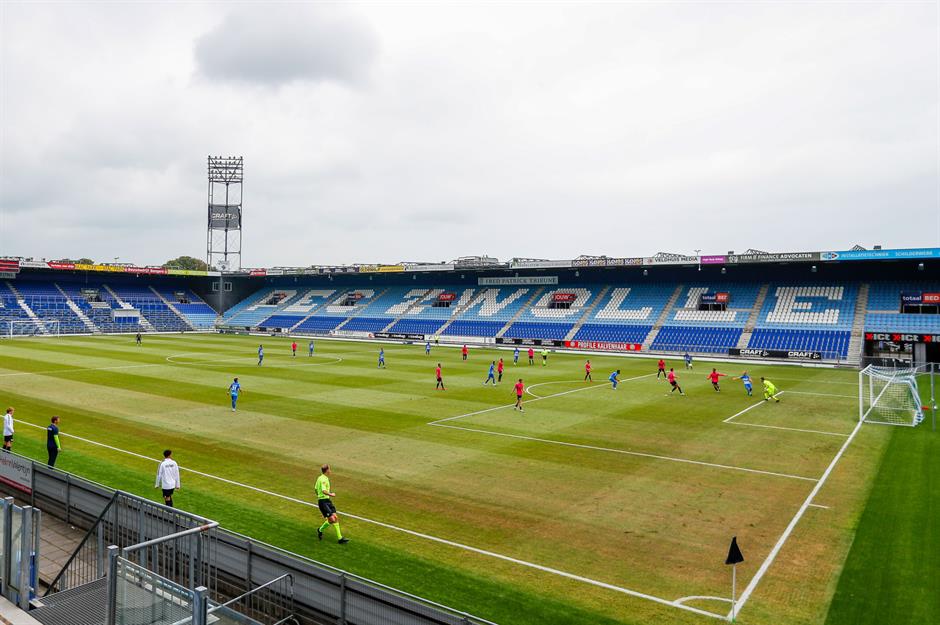
Live sports have also suffered because of coronavirus. While in many countries sports events are now seeing small socially-distanced crowds able to attend, most fans will still have to watch the game from home with broadcasters adding pre-recorded crowd noises to coverage to create the usual atmosphere. Elite teams around the world are losing millions each month in lost crowd revenues. Pictured is an empty stadium for a friendly football match between PEC Zwolle and FC Utrecht at the MAC3Park stadium on 29 August, but the following month saw the Netherlands allow socially-distanced crowds as long as no singing or chanting takes place.
Theme parks closed or restricting numbers of visitors
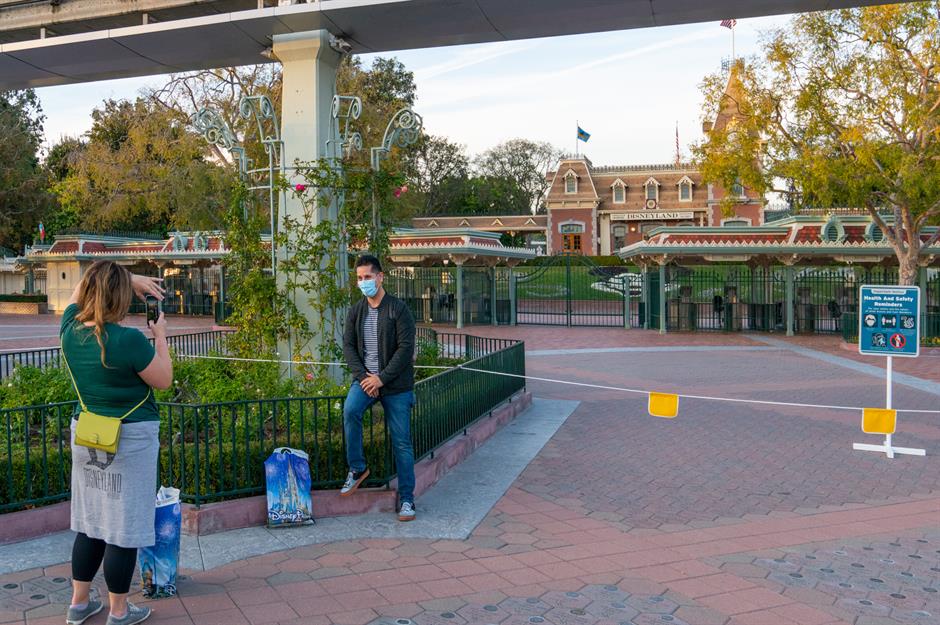
The theme park industry may take some time to recover fully from the coronavirus pandemic. Closures have eaten into revenues and resulted in job losses – Disney is cutting 28,000 jobs at its theme parks, with the company posting a loss of $4.72 billion (£3.6bn) for the three months up until 27 June, its first quarterly loss in almost 20 years. In May, Disneyland re-opened in Shanghai, following a three-month closure, but to reduced numbers, while Walt Disney World Florida reopened in mid-July under similar conditions. However, the Disneyland resort in California remains closed to the public due to infection levels in the state, and the closest visitors can get to enjoying the theme park is to take photos from outside the gates as seen here.
Nearly-empty gyms
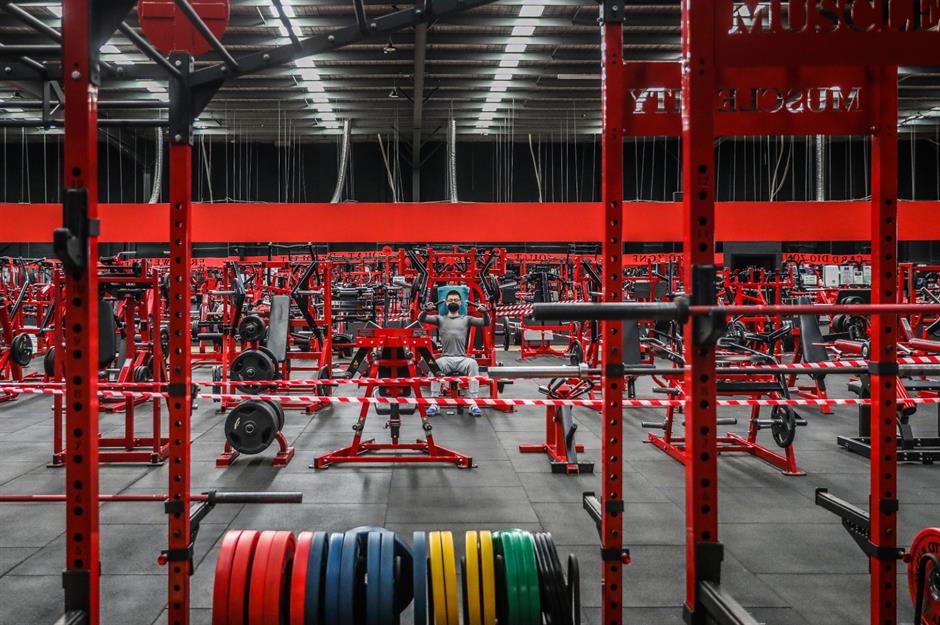
The health and fitness industry has been turned upside down by the pandemic. As gyms and leisure venues in most countries were forced to shut due to lockdown measures, many have enjoyed the benefits and flexibility of working out at home and decided not to return to gyms when they reopened. According to a global survey by RunRepeat in August, which polled 5,055 people, almost 70% of gym members had not returned to the gym. Pictured is a lone gym member at Muscle City 24/7 Gym in Mount Waverley, Australia.
Planes grounded
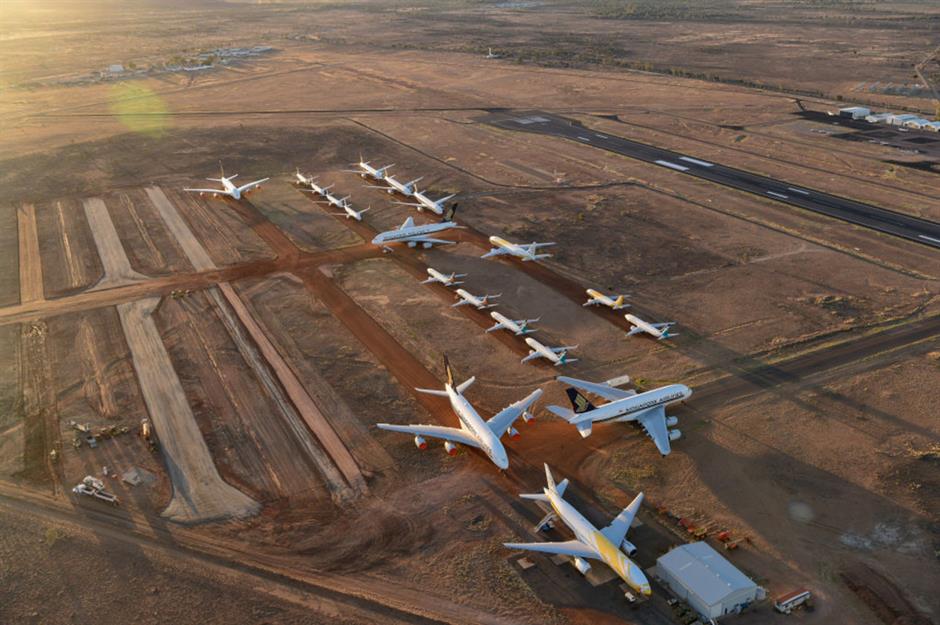
As countries closed their borders and issued travel restrictions, many planes were unable to take to the skies and were left grounded at airports instead. According to the International Air Transport Association (IATA), passenger air transport was down 90% year on year in April 2020 and still down 75% in August. Alice Springs Airport in Australia’s Northern Territory has become a storage site for grounded planes in recent months after the government invested AU$3.5 million ($2.6m/£2m) – it’s currently home to more than 100 jets and is making space for a further 60. Ordinarily, it would only house around 18 aircraft.
'Ghost' cruise ships floating empty...
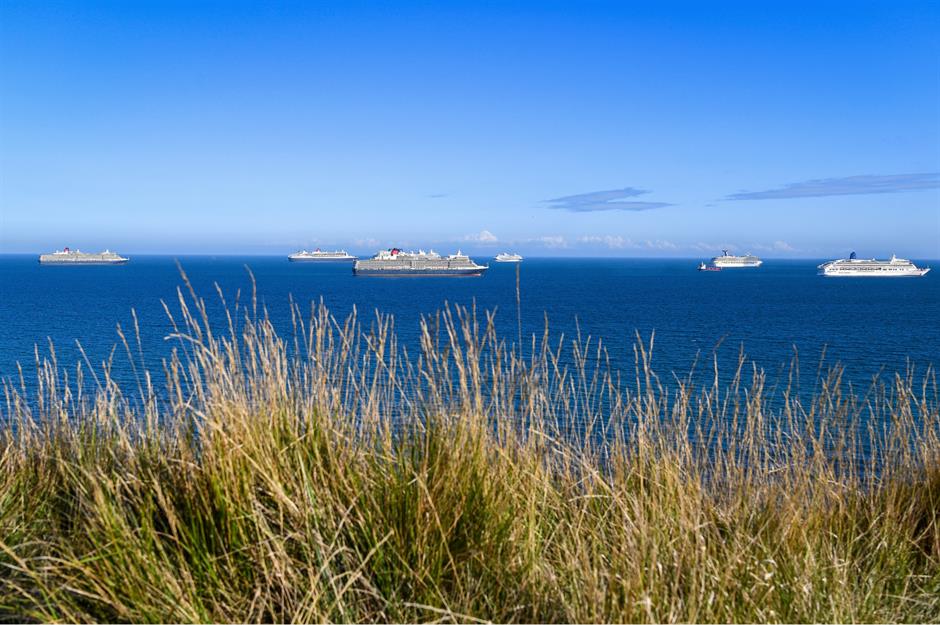
The $150 billion (£112.5bn) cruise industry has been left in tatters by the coronavirus pandemic. Many ships have had to remain stationary waiting until the world opens up again. Pictured are cruise ships that were anchored in the English Channel off the south coast in August. Dubbed 'ghost ships' they became a local attraction with people travelling to the area to spot the dormant ships on the horizon, or even to jump on a local small passenger ferry to see the big ships up close.
...or sold for scrap
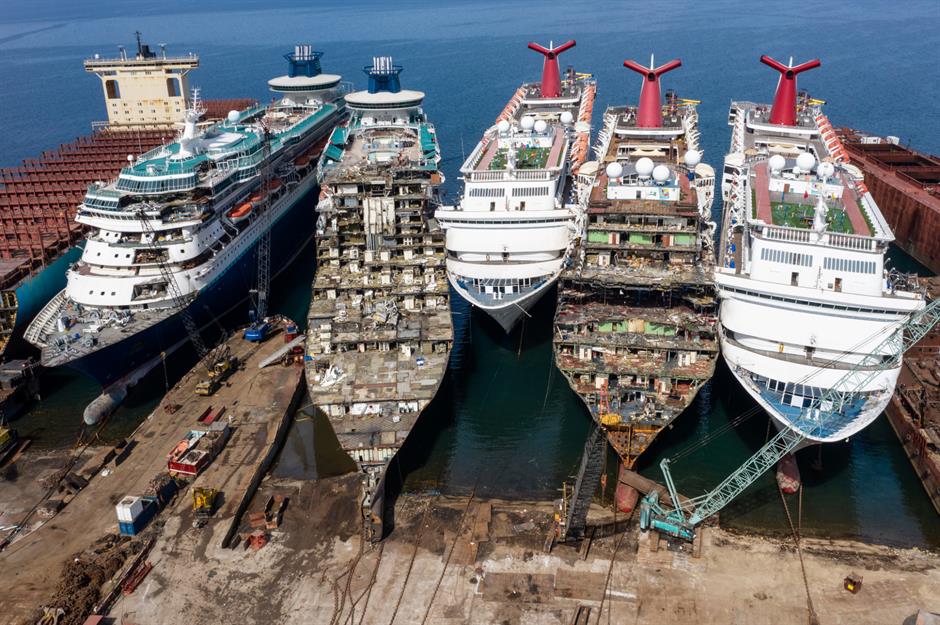
But these images of once-valuable cruise ships being dismantled for parts at Aliaga ship breaking yard in Turkey show some vessels that have been taken out of service to free up some cash. Cruise liners have had to cancel trips for this year and the US had a no-sail order up until the end of October, when it was replaced by a conditional sail order which allows a gradual return to cruising – although some believe the no-sail order should last longer.
Now read about the cost of cancelling of 2020
Comments
Be the first to comment
Do you want to comment on this article? You need to be signed in for this feature